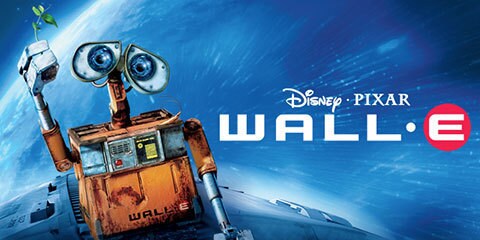Wall-E is
the 9th film in the Pixar library, and back in the director’s helm
is Andrew Stanton, who had directed Finding Nemo as well as co-written the Toy
Story films and A Bug’s Life (though we won’t hold that against him) he was
also came up with the plot with Pete Docter, and wrote the screenplay with Jim
Reardon, who worked on the Simpsons as well as Tiny Toon adventures.
This film
presented a unique challenge, as the main characters had a bare minimum of
dialogue and they’d have to other ways to convey the information through the
visuals, as a result, this film was their most complex since Monsters Inc,
requiring 50,000 more storyboards than the usual 75,000 for a Pixar film.
The
animators used silent films as a reference for getting their characters to
emote without words, but their job was made even harder given what they were
animating and the limitations that came with it. R2-D2 was apparently
influential in that regard.
The budget
for this film was $180m, another increase and more akin to the norm as the Disney
era continues, the film made $533m at the box office, less than Ratatouille did
but enough to be successful, this film was applauded by critics and audiences
with ratings of 95% and 90% respectively. But where does it rank on my list?
Let’s take a look.
WALL-E (Ben
Burtt) is a tiny trash compactor dealing with the trash on the long-abandoned
planet Earth. He’s the last one still operational and has become somewhat
lonely, collecting bits of history he finds interesting and befriending a
cockroach. Things change when he comes across EVE (Elissa Knight) a modern
machine that’s searching for any signs of organic life on Earth, WALL-E begins
to fall for EVE but EVE finds a plant, and her directive is to report it to the
captain of the Starliner Axiom, signalling that it’s safe to return to Earth.
Unfortunately in the 700 years since they left, humans have changed, the
gravity has reduced their bones, leaving them barely able to walk and their
reliance on machines has left them fat and lazy, and the Auto-pilot of the
axiom (voiced by MacInTalk in one of the most ingenious casting tricks ever)
has been told to prevent them returning.
Before we
get to the subtext let’s talk about the rest of the film. The animation is
really good, the robots are given a lot of personality just by the way they
move and interact with each other. WALL-E and EVE are adorable, they’re very
well designed and highly versatile. They also incorporate a few bits of live
action to make the world feel a little more real, we’ll get to why that’s
important later. I didn’t notice any particular new features but the animation
also conveys the mood. The use of light and colour on the Earth scenes is
fantastic, and the more clinical but busy design of the axiom is great also.
The idea of
humans evolving the way it’s presented here is both terrifying and believable,
their design is repulsive by intent, we are not meant to idolise where these
people are.
The music is
what sells the first half of this story, the use of a few old songs and some atmospheric
tracks sell the mood well, complimenting the animation. The theme of nostalgia
is certainly present during the first act. In fact the first 30 minutes might
be some of the best work Pixar has ever done up to this point.
The film
incorporates some slapstick comedy and consumerist satire so the film isn’t
dire to watch, it knows how to make an impactful story without it being
entirely depressing. The humour isn’t laugh out loud funny but it works with
this story.
But we
really have to get to the messaging. Wall-E is as relevant today as it was 12
years ago when it came out. It has harsh critiques of the human race and our
attitudes toward our environment, and also our ever-increasing reliance on
technology. But it must be stressed that this is not what the story is about,
they are elements that inform the story, which is at its heart a love story. Its
not the core of the story, but it’s enough to make people think.
In that
respect, the aspects on the ship end up as the weaker part. The pace is
dialled up, as well as the comedy, which works but it’s no longer as
atmospheric and impactful as the bits on Earth, though those aspects are not
entirely removed. The ending is the one bit that I find a bit suspect. One
plant living on Earth is not proof that humans can live. Plants require carbon
dioxide and produce oxygen, the opposite is true of humans, it also doesn’t
eliminate the fact that most of the Earth, or at least what we see, is covered
in rubbish, and operation clean-up did not, in fact, clean it up. The credits
do show humans starting to thrive, so there’s that I guess.
Also, EVE
managing to spark WALL-E’s memories back was a contrived way to get a happy
ending, I know WALL-E was damaged but they could’ve just left his memory
in-tact.
WALL-E
stands as a stunning use of visual storytelling, with a phenomenal first
half-hour, it has a good mix of heart and humour, complimenting a complex
message enough to adults think about their impact on the world. Its ending puts
a neat bow on things that it probably shouldn’t have.
#1 The Incredibles
#2 Finding Nemo
#3 WALL-E
#4 Toy Story 2
#5 Toy Story
#6 Monsters Inc
#7 Ratatouille
#8 Cars
#9 A Bug’s Life


No comments:
Post a Comment
Feel free to leave a comment, whether you agree or disagree with my opinions, and you're perfectly welcome to. Please be considerate